Touring Mahoney’s in Brighton
After a quick “Hey, friend!” catch-up at Cultivate with Liz Lark-Riley, the freshly promoted Marketing Director for Mahoney’s Garden Centers in eastern Massachusetts, we arranged for me to have a tour of their newly renovated store in Boston’s Brighton neighborhood. As a 24-year resident of Boston myself, I’ve visited this location—a former luxury car dealership—many times and also had the opportunity to shop Mahoney’s previous spot across the Charles River when they were located in Cambridge.
Believe me when I say the third time’s the charm. Having not visited during any of the construction, which began late last summer and technically ended just after Mother’s Day (bummer about that missed weekend!), what I visited was a completely transformed location.
I’m giving you a quick rundown of some of the highlights here and in the coming months I’ll have a more in-depth piece that will include my conversation with Tom Mahoney about this renovation.

Mahoney’s engaged Galante Architecture Studio for the project, starting with reimagining what had been an uncovered entry point to the garden center leading to the cement-block former car dealership building that housed their offices, pottery room and indoor checkout. They came up with this “butterfly,” which Tom said is an architectural term where, rather than having a peak, the high side walls come down to a valley and offsets the peak of the main greenhouse. This vestibule on one side houses carts as you go in and is the store’s exit on the other side.
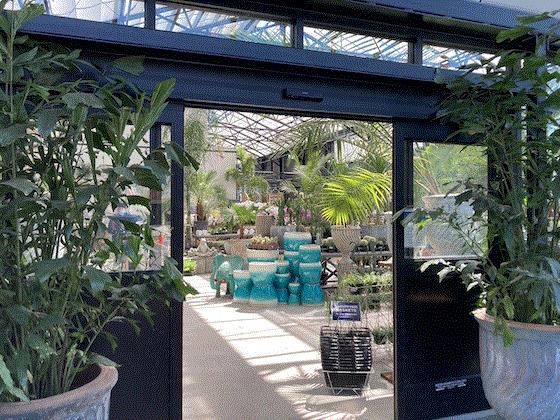
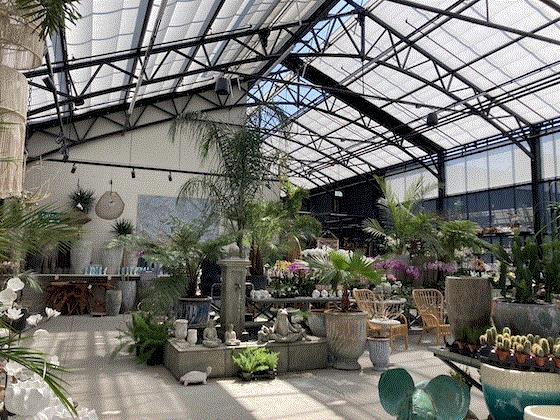
The “butterfly” entry leads to this first greenhouse room, which is home to a changing assortment of products and plants. I visited on a fairly hot day and it was still comfortable thanks to the shading, venting and general design.

This room sets the mood for the shopping experience with at least three different water features, piped-in music and lovely displays.
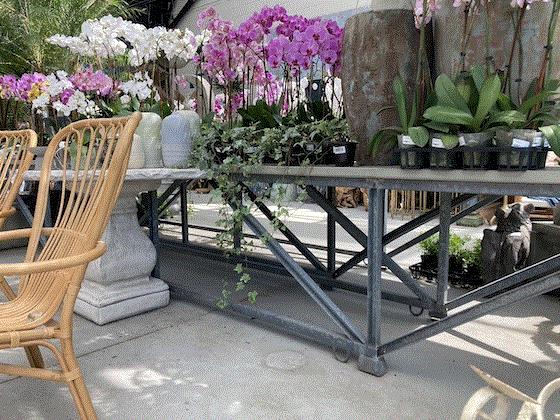

These tables were created by some of the staff from reclaimed items sitting around on this and other properties.

“Can We?”
Continued from above ...

When Tom and the architect were discussing the possibilities of erecting the greenhouse, they asked themselves, “Can we fly it over the pottery room? Can we fly it over and attach it to and keep the existing building?” And the answer was, yes ... yes, we can!
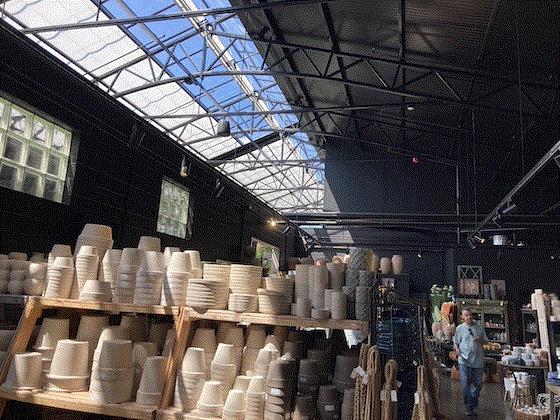
Doing this created natural light in the pottery room, something as a previous shopper I appreciate greatly.
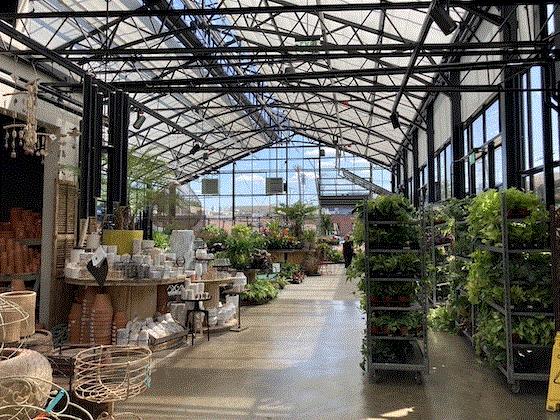
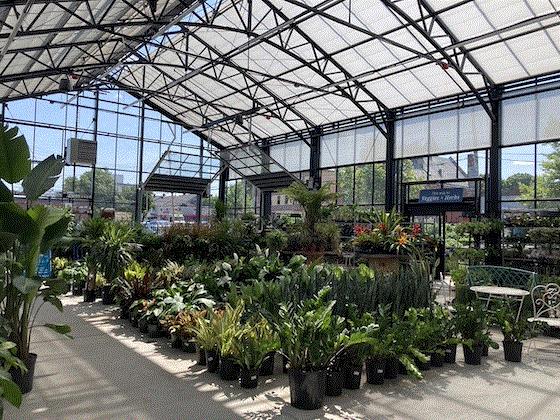
Flying the greenhouse over the existing building created this breezeway that can merchandize plants and products, leading to another plant-focused covered greenhouse space with houseplants and other items. They plan to use the far end as a classroom/workshop space. The outdoor space to the right of this house is the outdoor selling area for veggies and such.
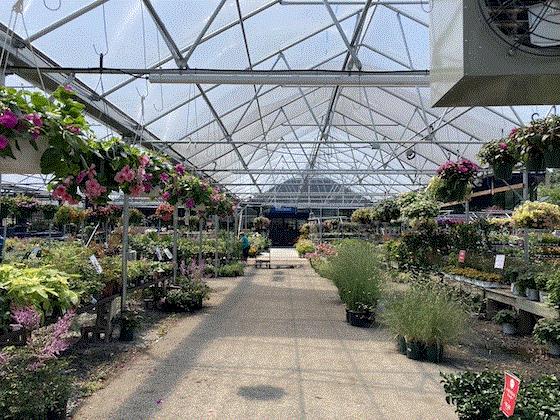
Believe me, if you need the City of Boston to give you a permit, take a seat and wait awhile. Mahoney’s couldn't move into the greenhouse until right after Mother’s Day and had to do their selling from within this large poly house. This aisle now leads to …
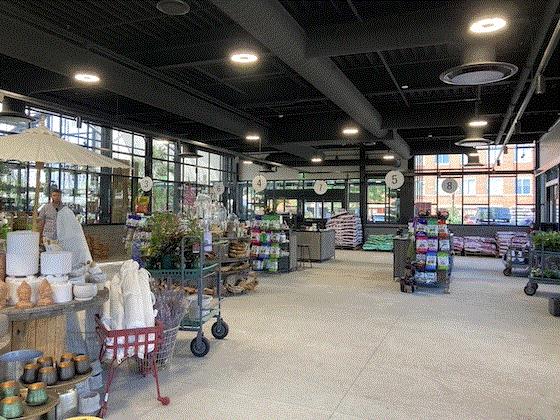
... this covered and air-conditioned checkout space, which is just on the other side of the entry to the garden center. It has plenty of registers and plenty of room for last-minute essentials and impulse items.
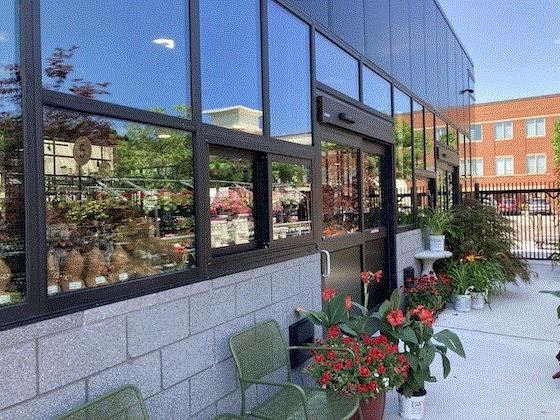
These are what I would call “emergency” check-out windows. Located along the outer wall of the checkout room, these two small service windows can open up during busy periods to help lessen congested indoor lines. What a super idea.
I should add that this store is the largest of maybe three independent garden centers and a half dozen small plant shops in Boston. It’s located a short drive from some swanky city neighborhoods and is in a neighborhood that thousands of college kids call their home away from home. That is to say, they do a very good houseplant business, despite being less than a mile away from The Home Depot in Watertown.
Stay tuned for more of my conversation with Tom about the renovation process, and my tour with Sara and Andrew about their retail strategies in an upcoming issue of Green Profit.

Sid On Sales Part II
Back in June, we had a discussion here about if folks in our industry had reverted to the pre-pandemic level of offering sales, typically of the “end-of-spring” variety. Renown IGC business consultant Sid Raisch presented us with his two cents on the topic shortly after that (you can read that HERE). And because Sid has a lot to say on the topic of sales, he’s returned with an additional two cents—four cents, actually—for today’s buZZ.
Here's Sid’s continued comments.
This began with comments on the use of "sale events" in the industry this year. Before getting into two important root causes of this, let’s clear up some terminology and look at alternatives to discounting.
Sales vs. Revenue: Clarifying Terminology
The term "sales" is often misused when referring to revenue. This confusion leads to an overreliance on discounting as a marketing strategy. While "sale events" can drive short-term revenue, they can also erode financial health and create customer expectations for future discounts.
Alternatives to Discounting
Instead of defaulting to sale events, retailers should consider alternative marketing themes that are less expensive and don't create a "waiting-for-the-sale" mentality among consumers. With more thoughtful planning, businesses can develop strategies that maintain profitability while still attracting customers.
Two Main Causes of Discounting
1. Overproduction—Excess inventory often results in discounting to clear stock. This is particularly common in retail-growing businesses, where the hope for ideal weather conditions leads to overproduction. With the exception of the best circumstances like we saw in 2020 and 2021, this rarely results in selling out completely.
To address overproduction:
-
Implement more disciplined planning based on reasonable volume expectations
-
Avoid filling all available space in anticipation of perfect conditions
-
Think differently—selling out is financially better than throwing out
2. Overbuying—Many retailers lack a space-planning strategy, relying instead on sales history and assortment-driven approaches. This often leads to:
-
Overcrowded stores
-
Limited space for customers
-
Excess backstock
-
Need for additional storage solutions (warehouses, attics, basements)
-
Increased inventory carrying costs and increased costs of caring for inventory
-
Additional labor and advertising expenses for clearance events
To mitigate overbuying:
-
Implement space-planning strategies
-
Choose inventory based on available display space
-
Balance assortment with spatial constraints

Quick Review of the Consequences of Discounting
Continued from above ...
What can happen when implementing routine discounts?
1. Financial Impact:
-
Erosion of profit margins
-
Increased carrying costs for excess inventory
-
Additional expenses for storage and clearance efforts
2. Customer Behavior:
-
Creation of discount expectations
-
Potential reluctance to buy at full price
-
Waiting for sales, leading to irregular purchasing patterns
3. Operational Challenges:
-
Overcrowded stores deterring customers
-
Inefficient use of retail space
-
Increased complexity in inventory management
Conclusion
While sales can be an effective short-term strategy, they often mask underlying issues in production, purchasing and space management. By addressing these root causes, retailers can reduce their reliance on discounting, improve profitability and create a more sustainable business model. Effective space planning, disciplined buying and innovative marketing strategies can help businesses move away from the "Easy Button" of sales and towards more profitable, long-term success.
Thanks for your expertise, Sid!
Any other thoughts on sales or an instance when a sale produced some unexpected results? Anecdotes appreciated! Send them along to ewells@ballpublishing.com.

Do You Use Promo Codes?
If so, then pay attention to the following. I'd just received Sid’s comments above when I found THIS PIECE about the results of a SimplyCodes survey about retailers’ use of promo codes. The take-home from the study found that within the first six months of 2024, retailers each issued an average of nine unique promo codes. This is a 31% year-over-year increase. By the way, SimplyCodes is a promo codes platform, which averages adding and testing 12,000 promo codes per day.
Other results from the study of 400,000 retailers include:
-
Average discount offered this year was 17.6%, up from 17.17%.
-
The average savings per promo code was $33.25 compared to $27.26 last year.
-
Single-use codes, which are codes emailed and texted to shoppers, were used by 47% more retailers than last year.
Another recent SimplyCodes survey found 89% of those with an annual household income of $175,000 to $199,999 seek out and use promo codes. This compares to just 53% of those with household incomes of $10,000 to $24,999. That survey also revealed that folks who are 18 to 29 years old are most likely to use coupon codes; 46% of people in that age group say that if they see a code in a store, it’ll motivate them to shop there. That compares to 36% of those in the 30 to 44 age group and just 30% of those 45 to 60.
Does your store offer promo codes? How’s it working for you? Tell me about it HERE.

Doing Good is Going Great
A few years ago I had an irregularly occurring buZZ! item that focused on the “good things” people and companies in the horticulture industry were doing to help children, their communities, the environment and folks in need. I was reminded that I hadn’t done that in a while when I received an email from the folks at Vermont-based American Meadows and sister company High Country Gardens about their quest to reduce their organic waste to zero.
How?
They're accomplishing this by donating all of the unsold plants at the end of each season. So far this year they’ve donated plants to about two dozen recipients to help create new community gardens, memorial gardens, educational initiatives and even some habitat restoration projects. This is a nationwide effort, too, with plants being donated for projects from Philly through the Midwest and out to Utah and New Mexico.
“Sending organic materials to landfills creates consequences that are counterproductive to our purpose,” wrote American Meadows/High Country Gardens’ Partnership Cultivator Tabar Gifford in a press release. Tabar, who's leading this initiative, explained that any organic matter—whether its yard waste, food scraps or plants from a nursery—will create methane emissions and also produce chemical- and pollutant-laced leachate if disposed of in a landfill.
This year so far American Meadows and High Country Gardens have found homes for 100% of their unsold plants. These donations have gone to two dozen community groups and organizations that are near their current and former greenhouse locations. They’ve built up a portfolio of organizations who can take their remnants and are always open to helping as many aligned programs and organizations as possible. All told, they gave away more than 15,000 plants and bulbs.
“Bringing communities together while adding beauty and ecological benefits was a big motivator for us,” Tabar noted.
Sure, throwing their unsold plants into a compost pile would be another solution—and would eventually be a benefit for themselves as the compost is used in-house later. But if they did that, would the following comments from their recipients have happened? Take this one from Carrie Coyne of the St. Louis Community College’s Meramec Horticulture Program:
“Much of our curriculum focuses on native plant horticulture and healthy ecosystems, so the species of natives and nativars that were donated really helped us improve and increase the diversity of our herbaceous perennial collection.”
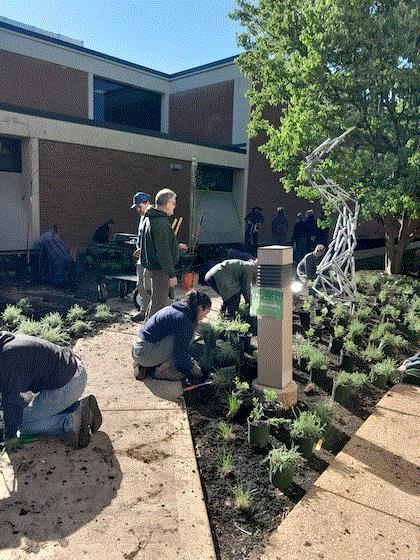
Or this from Tom Kassan of the Avon Land Trust in Connecticut, which is restoring public spaces in his town:
“Since we created the garden right at the trailhead, anyone who comes to the property to hike or bird watch from the gazebo will be able to enjoy the pretty garden growing alongside. Hopefully, that inspires others to plant a native garden at their house or do something similar in a different community.”
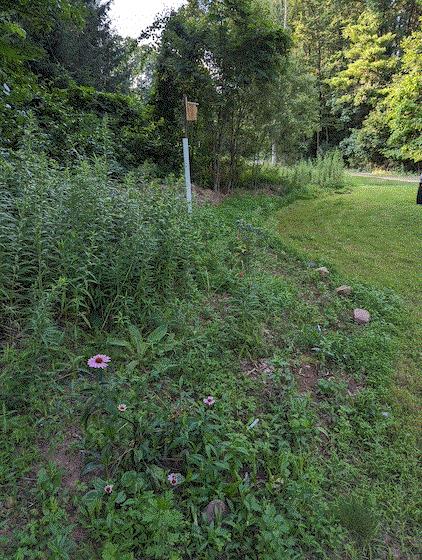
I bolded that last sentence to point out that when more people see a beautiful garden, the more likely they are to shop at your store in order to create that sight and that joyful feeling for themselves.
And here’s another point: Not only is 0% organic waste a nice thing to aim for, it’s becoming mandatory in more and more places. American Meadows’ press release points out that Vermont was the first state to pass a law that banned all food scraps from the landfill. On the heels of that state law is the June 2024 announcement from the USDA of a new national strategy for reducing food loss and waste and recycling organics aimed to reduce waste, pollution and ultimately save money for families and businesses alike. (Here in Boston we have a voluntary curbside food waste recycling program—and the city can’t keep up with demand for the bins!)
“This is just the beginning,” Tabar pointed out. American Meadow/High Country Gardens has created the Doing Good Through Gardening Hub where they’re posting all the projects being undertaken with their donated materials, as well as mentioning their ongoing partnerships.
What are you doing with your leftover-but-still-plantable plants? Drop me a NOTE about it!

The PPOY is …
The Perennial Plant Association recently held its National Symposium, after which they announced the Perennial Plant of the Year for 2025, and it’s one I actually have in my garden! Pycnantemum muticum, also called Mountainmint, Blunt Mountainmint or Short-toothed Mountainmint. No, it’s not a true Mentha species, but I can attest that its leaves, when I get a little too close with my lawn mower, do indeed smell like mint.
Mountainmint is a native to meadows and open woodlands in the eastern U.S. and west toward Texas. PPA’s press release calls it “a must-have” for pollinator gardens—and, again, I can say mine is currently swarming with multiple varieties of winged creatures. You wouldn’t think its inconspicuous flowers—so indistinguishable from its silvery bracts—could lure so many butterflies, wasps and bees, but it does. Another thing about the silvery bracts is that they give the plant the appearance of having a persistent dewy coating, or frost, in cooler months.
PPA calls it “a tough and adaptable perennial native with no serious diseases issues.” Yes, true.
Also, “due to its aromatic foliage, it’s unpalatable to deer and rabbits.” Again, true! It grows into a dense, weed-suppressing clump about 2- to 3-ft. tall and spreads through underground rhizomes. PPA says in moist conditions it can be “aggressive,” although not invasive.
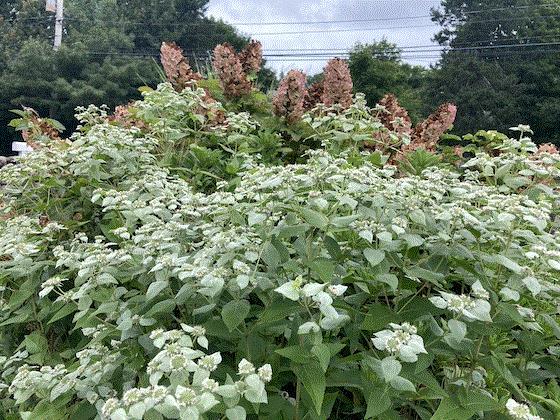
Mountainmint in my front border against the fading blooms of a lovely oakleaf hydrangea from Bailey (I forget which variety).
It's not a showstopper type of plant like a swath of rudbeckia, but would play well planted with the more bodacious native perennials. For me, it’s been a stand of plants that I don’t have to worry about watering, weeding, trimming and protecting from pests. All this from a plant that was gifted to me five years ago and I had no idea what it was. PPA, I’m a believer and I’ll sing its praises from the mountain(mint)tops for you.
Learn more about it and read others’ praises of it HERE.








Questions, comments, suggestions? Drop me a line if you'd like at ewells@ballpublishing.com.

Ellen Wells
Senior Editor
Green Profit
This week's BuZZ! was sent to 27,510 loyal readers!
If you're interested in advertising on BuZZ! contact Kim Brown ASAP!